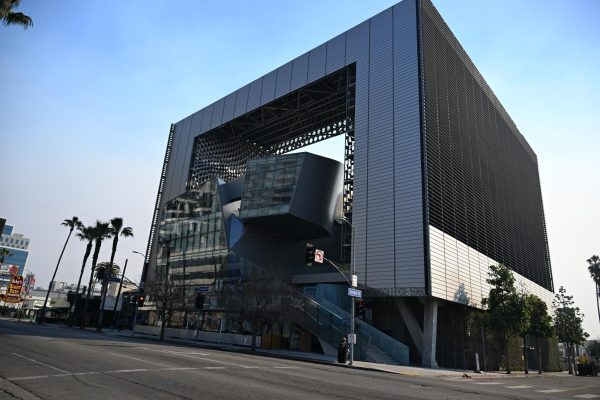The Department of Visual Media Arts will depart Emerson’s School of the Arts and be elevated to the School of Film, Television, and Media Arts, the College announced in a press release on Tuesday. Associate VMA Professor and Department Chair Shaun Clarke will lead the new School as its Interim Dean effective Sept. 1, 2025.
“The creation of this new School reaffirms Emerson’s ongoing commitment to global leadership in communication and the arts,” President Jay Bernhardt said in the email to community members. “This is an overdue recognition of our largest academic program that has long shaped global storytelling and has produced some of the most talented creators and professionals in the entertainment industry.”
Clarke said the school of film matches rapid changes occurring in both the curriculum and the industry.
“We recognize the need for an ever-evolving curriculum and student experience to match the fast-paced changes in the film, television, and media arts industry of the future,” Clarke said in the press release. “The creation of this school builds on our successful and innovative hands-on curriculum, our state-of-the-art equipment and facilities, all led by our world-class faculty from around the globe.”
The school will offer students access to virtual production studios, courses around emerging technology, and certification for ARRI professional-standard film equipment while being taught by industry experts and creators. Following the exit of the VMA department from Emerson’s School of the Arts, the Marlboro Institute for Liberal Arts and Interdisciplinary Studies will take its place. This move is meant to manage the college’s resources while helping to synergize its core offerings, Bernhardt said in his email.
The college’s website noted that major requirements, courses, and academic programs under the VMA Department will transition into the School of Film, Television, and Media Arts. Several courses under the school include topics in the production of music videos, games, and feature films, as well as examinations of media around social justice and the age of artificial intelligence.
Rising senior Nandan Nair, the former President of the Student Government Association, said the creation of the school of film is “something [he] can get behind.”
“It honors the incredible work of our faculty and students, past and present, to pioneer new trends and further the art of filmmaking,” he added. “It also seems pretty consistent with how other major film schools structure their respective programs.”
Nair also hopes to see more academic course offerings, career preparedness opportunities, and diversity of majors within the school of film.
“It’s something I heard a lot of feedback on and agreed with during my time as SGA President,” he added. “And with this jump from a department to a now full blown school of its own, I definitely think it’s worth looking into so that we truly follow through on this intent to elevate the department, honor the efforts of our alumni and ensure we continue to uphold and empower our students to push boundaries and keep raising the standard in film and television around the world.”

Nair is one of roughly 200 students heading to Emerson Los Angeles in the fall, and he wants to see how the school will impact the campus’s course offerings and build on Emerson’s “already strong presence in the Hollywood area as a powerhouse in film and television.”
But for some, like recent Visual and media arts graduate Caden Lisa, the expansion of Emerson’s television and film offerings is frustrating to see after graduating. Lisa called the decision a “slap in the face.”
“My frustration stems from the fact that when I was graduating high school and went to Emerson College, I had the expectation and the desire to work in television,” Lisa said. “And in hindsight, it is baffling that they only had one TV production class, among other complaints that I have from what I thought was a lackluster curriculum.”
Lisa noted how many of the lessons he learned “had little to do with classes at Emerson,” citing how skills in foundational courses were hardly practiced during freshman year in favor of liberal arts requirements.
“I wanted to work in TV,” he added. “I don’t mean to be dramatic when I say this, but when I went to Emerson, my [dreams] of what my future would look like were crushed. I found another niche, but I wish it didn’t cost this big of a financial burden.”
He hopes that future VMA students in the new school receive a clearer curriculum and “more opportunities to learn practical skills.”
Aside from the school of film, the college announced the development of various academic innovations to enhance student career preparedness, education opportunities for arts and communications professionals, and collaborative research efforts, among other opportunities as part of the “Extraordinary Emerson 2030” initiative.
According to Bernhardt, Tuesday’s announcements are only the first in broader steps toward the college’s future.
“Over the next few weeks, we will share more information about other changes and innovations, including carefully considered and prudent financial management decisions that respond to the mounting pressures on higher education,” he wrote. “Although some of these issues will be challenging, we remain guided by our mission, vision, and shared values, which are rooted in creativity, innovation, inclusion, curiosity, equity, expression, and collaboration.”